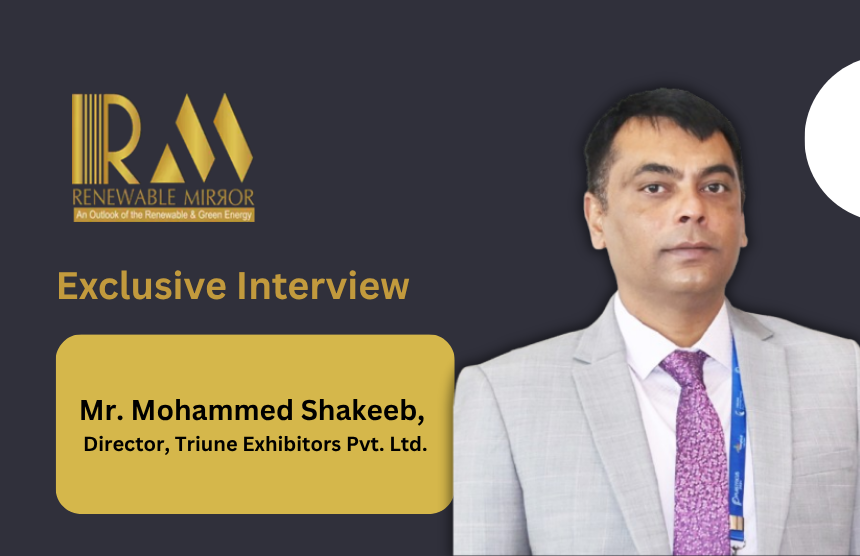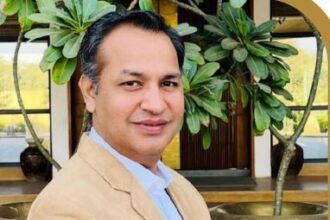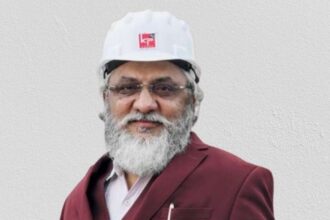Last Updated on November 18, 2025 by Author
Q1. Triune Exhibitors has built a strong reputation for organizing large-scale trade events like Elasia. As India transitions rapidly toward clean energy, how is Triune evolving its exhibition strategy to align with the nation’s renewable growth vision?
Through platforms like ELASIA, Triune Exhibitors has had the honour of contributing to India’s industrial development over the years. Our emphasis has shifted from promoting traditional power technologies to facilitating clean and sustainable energy ecosystems as the country moves closer to its ambitious renewable energy targets.
This development is reflected in the 4th edition of RenewableAsia 2026, which is co-located with ELASIA 2026. To hasten India’s clean energy transition, the event intends to bring together stakeholders from all points along the renewable value chain, including solar, wind, bioenergy, EV integration and energy storage. Our approach is to present RenewableAsia as a collaborative marketplace where business, policy and innovation come together to shape India’s green energy future, rather than merely as an exhibition.
Q2. With the electrical and renewable sectors becoming increasingly interconnected, is Triune Exhibitors planning to diversify or expand its event portfolio toward renewable energy segments such as solar, wind, or green hydrogen?
One of the biggest prospects for industry cooperation in the next ten years, in our opinion, is the convergence of the electrical and renewable sectors. Renewables will play a key role in both generating and distribution systems as electrical networks modernise.
Triune is aggressively broadening its focus to include new renewable energy sectors such as grid integration technologies, green hydrogen, wind power systems, solar PV manufacturing and battery storage. Building a specialised renewable platform we intend to expand it in subsequent editions with knowledge-led conferences, technology showcases and country pavilions.
Q3. How do you foresee Elasia integrating renewable and sustainable technologies into its future editions not just as exhibitors, but as a core part of the event’s identity and knowledge-sharing platform?
RenewableAsia and ELASIA are intended to work in tandem. Integration of clean energy—distributed generation, storage-driven power management and smart grids—is critical to the electrical industry’s next stage of expansion.
Our objective is to establish sustainability as a fundamental characteristic of the merged platform. This entails exhibiting energy-efficient electrical devices, exhibition spaces that run on renewable energy and specialised seminars covering subjects like digital energy management, grid resilience and decarbonisation. Additionally, we want to establish an Innovation Pavilion where R&D organisations and startups can showcase sustainable solutions that benefit the renewable energy and power industries.
Q4. From your perspective, what emerging trends in renewable manufacturing, storage and smart power distribution are most likely to reshape the exhibitor landscape at events like Elasia in the coming years?
The industry is being redefined by a number of exciting trends:
- Batteries and Energy Storage Systems are becoming an essential link between dependable grid power and renewable energy sources.
- AI-driven load management, predictive maintenance and digital monitoring are all integrated into smart power distribution.
- Green hydrogen’s emergence as a practical clean energy substitute for industrial applications.
These developments are broadening the exhibitor base beyond conventional electrical manufacturers to include clean energy startups, energy-tech firms, renewable OEMs and automation experts. We expect the exhibitor mix at ELASIA and RenewableAsia to become even more diverse and globally connected.
Q5. The renewable energy market in India is rapidly evolving with policy incentives, private investments and technological innovations driving growth. From Triune Exhibitors’ vantage point, what key market gaps or opportunities do you see that the exhibition platform can help address and how can Elasia 2026 become a catalyst for new business models, partnerships and market expansion in the sector?
The renewable energy sector in India is at a turning point; while significant progress has been made, more cooperation between industry stakeholders, policymakers and technology is still required.
With RenewableAsia, we hope to foster collaborations between investors, startups and technology providers and in the process encouraging renewable components to be made in India. ELASIA 2026, in our opinion, will serve as a catalyst for cooperation, opening up new business opportunities in sustainable manufacturing, smart microgrids and decentralised generation.
Q6. Looking ahead, what is your long-term vision for positioning Triune as not only a voice of the electrical and infrastructure sectors but also as a key enabler of India’s renewable and sustainable energy transition?
Our long-term goal is to establish Triune Exhibitors as a reliable link between emerging technologies and legacy industries. We aspire to be known as ecosystem builders rather than merely Exhibition Organiser, bringing together investors, industry, government and innovators in one location to promote sustainable growth.
Triune will keep growing its role in advancing clean energy, effective infrastructure and green innovation. The journey to align our platforms with the national vision of an electrified, sustainable and self-sufficient India is just getting started with RenewableAsia 2026.










